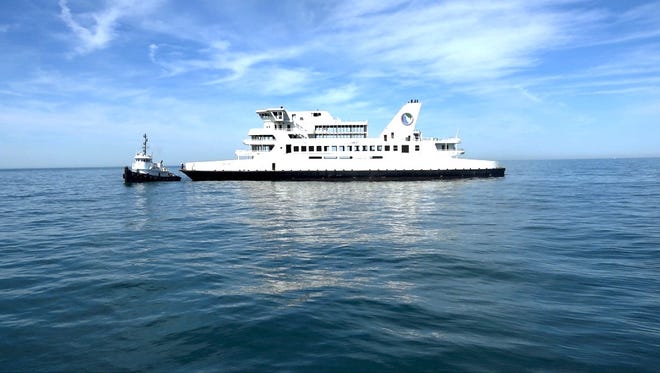Former Cape May-Lewes ferry vessel sunk, rests on ocean floor as new home for marine life
 Maddy Lauria
Maddy Lauria
One of the original Cape May-Lewes ferry vessels has reached its resting ground on the ocean floor, where it will provide artificial habitat for marine life.
After thousands of trips between Cape Henlopen and Cape May, the 2,100-ton M/V Twin Capes was sunk on Friday at the Del-Jersey-Land Inshore Artificial Reef, joining several other vessels that have enhanced fish habitat in the area, the Department of Natural Resource and Environmental Control said in a press release.
The Twin Capes, which began operations more than four decades ago, is the third vessel sunk at the Atlantic Ocean reef site. The ex-destroyer USS Arthur W. Radford was sunk in 2011, followed by the harbor tug and Battle of Iwo Jima survivor-turned U.S. Coast Guard cutter the Zuni/Tamaroa.

The 568-foot long Radford is the longest ship ever reefed on the East Coast, but state officials said the 320-foot long Twin Capes “may be the best addition yet to Delaware’s artificial reef system for both fishing and recreational diving opportunities.”
The ferry, one of three original vessels of the Delaware River and Bay Authority fleet, was retrofitted in the 1990s with structures that officials say will lend to the creation of ideal fish habitat and likely attract tuna, sharks and seasonally even barracudas.
SHIPS FOR ARTIFICIAL REEFS
WWII vessel becomes latest fish habitat
World War II-era ship to be reefed off DE-NJ coast
'Perfect Storm' ship to be sunk off Delaware